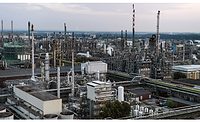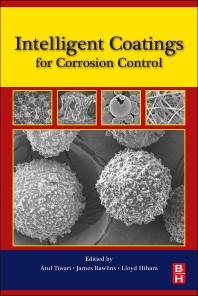Covestro Aims for Climate Neutrality

LEVERKUSEN, Germany — Covestro recently announced that the company has focused its corporate vision on becoming fully circular. To this end, the materials manufacturer aims to completely align its entire production and product range, as well as all long-term objectives, to the circular concept. One concrete measure on this path is climate neutrality. In 2021, Covestro cut specific greenhouse gas emissions, those generated per metric ton of product produced, by 54% compared to 2005 and in doing so, overachieved its previous sustainability target set for 2025.
Covestro has now set a new target: the group aims to become climate neutral and achieve net zero emissions by 2035 for scope 1 and scope 2. On the path to achieving this goal, the company plans to cut greenhouse gas emissions from its own production (scope 1) and from external energy sources (scope 2) by 60% to 2.2 million metric tons by 2030. In addition, indirect greenhouse gas emissions from upstream and downstream processes in the value chain (scope 3) will be further reduced. Covestro intends to announce a reduction target for this by 2023.
To achieve net zero emissions, Covestro anticipates dedicated investments of an accumulated €250 million to €600 million by 2030, resulting in lower operating expenses of expected €50 million to €100 million annually due to growing energy efficiency. On its path to achieve net zero emissions, Covestro also expects an increase in operating expenses in the magnitude of a low three-digit million euros amount annually. These cost assumptions are based on the historic experience that prices for fossil-based energies are lower than prices for renewable energies.
“For the past two years, we have been working at full speed on our vision to become fully circular. We have already reached important milestones on this path and continue to set ourselves ambitious goals. Thanks to this approach, we are a pioneer in our industry and have accomplished many successes. One next milestone are our bold climate targets,” said Dr. Markus Steilemann, Chief Executive Officer of Covestro.
“In a circular economy, we can protect the climate, nature and resources and achieve sustainable growth that respects planetary boundaries. Covestro and the chemical industry are part of the solution. Sustainability cannot be done alone and will require a greater effort from everyone to achieve the goals of the Paris Climate Agreement. Policymakers, business and society must work together to achieve ambitious climate goals,” said Steilemann.
A key aspect of the new 2035 reduction target is meeting the goal of the Paris Climate Agreement. Three levers make a vital contribution to achieving the climate targets
Production processes will be improved further and energy efficiency enhanced to achieve even more sustainable manufacturing. One focus is on reducing nitrous oxide emissions, made possible through greater use of innovative catalyst technology. In addition, production plants can be controlled more efficiently thanks to further digitalization of the facilities and the use of digital technologies, while processes can be optimized using digital simulations. Digital technologies also help collect and track emissions data throughout the value chain.
Covestro’s production sites worldwide are to be gradually converted to renewable electricity. That includes the use of offshore wind power, backed for example by a supply agreement with the energy provider Ørsted, which will cover 10% of the electricity required by the company’s sites in Germany from 2025 on. Onshore wind energy will also be used. About 10% of the electricity Covestro needs in Shanghai, China, already comes from the solar parks of Datang Wuzhong New Energy Co. In addition to the existing cooperation models with power suppliers, further agreements are being planned in order to achieve a net zero carbon footprint.
Steam is an important energy source for chemical production processes. Converting steam generation from fossil to renewable energy sources is a challenge that Covestro intends to solve by various routes. To this end, the company is looking into the use of biogas and green natural gas as an energy source to generate renewable steam. Green hydrogen and green ammonia or green electricity could also be used as energy source for steam generation.
Covestro is updating and expanding its existing management system at the start of fiscal year 2022. The group is also adding a sustainability component, measured by direct and indirect greenhouse gas emissions (scope 1 and 2) in 2022. Reducing greenhouse gas emissions (scope 1) has been a key performance indicator used as a component top management’s long-term compensation since January 2021.
“We aim to shift all our production processes and products completely to circular principles in the long-term, and we intend to support meeting our and climate objectives of our customers at the same time,” said Lynette Chung, Chief Sustainability Officer at Covestro. “Circularity and climate efforts are two sides of the same coin for us. With our climate neutral product offerings, our customers can thus expect us to fulfill both needs at the same time. We aim to make sustainability decisions as simple as possible for our customers.”
Looking for a reprint of this article?
From high-res PDFs to custom plaques, order your copy today!






.jpg?height=200&t=1672116434&width=200)


